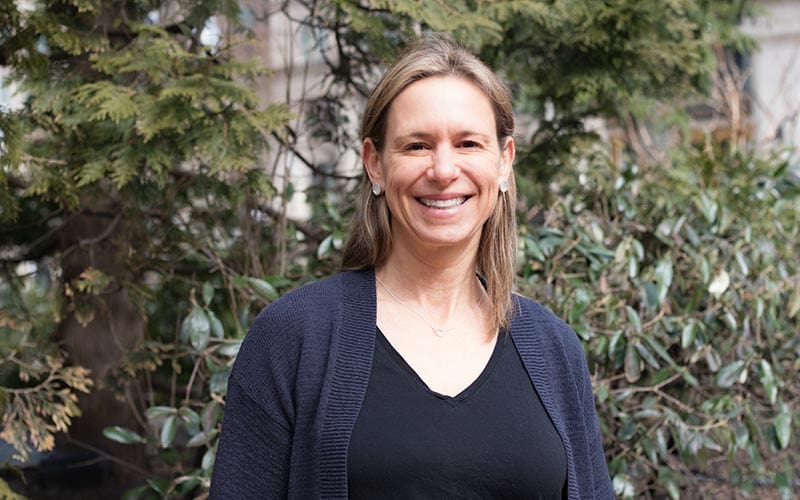
Kate Sinding Daly, CLF’s new senior vice president of law and policy, is a veteran environmental advocate primed to oversee the organization’s advocacy efforts across New England.
You’ve spent years in the nonprofit environmental space – how did you first develop your interest in environmental causes?
My parents both worked for the U.S. Agency for International Development, so I had the good fortune of spending much of my childhood in the global south (Pakistan, the Philippines, and Kenya). I attribute the opportunity to experience a vast array of cultures and geographies to my interest in ensuring a healthy planet for all people and creatures as well as future generations. I first decided to dedicate myself to a career in environmental advocacy the summer before law school, when I worked at a reproductive rights organization and saw the power of public interest law in practice.
What have been your greatest challenges and rewards in your environmental work thus far?
That has come through my work to prevent fracking, first in New York State and then more broadly. My experience working in deep, trust-based relationships with incredible champions in the grassroots and other partner organizations led me to appreciate that the role of the advocate is to help others.
The eventual achievement of a precedent-setting fracking ban in New York would not have been possible without the deeply collaborative and generative work that led then-Governor Cuomo to turn away from fracking as an answer to the upstate economy’s needs. That same experience shaped my strongly held perspective that to achieve all our environmental goals, we need a broad-based, community-driven movement. That movement should demonstrate an equitable distribution of power and resources. I see that strongly reflected in how CLF is approaching its work, which was a big aspect of what drew me here.
Now that you’ve joined CLF, what do you see as your single most important advocacy goal?
I’d like to see CLF play a critical role in bringing a holistic “just transition” frame to how advocates and policymakers approach solving the full range of our environmental challenges. That means recognizing the inextricable interconnection between the protection of our natural environment and a healthy economy, good jobs, and vibrant communities – for all. This requires those of us in the environmental community to incorporate – at the outset – consideration of the full measure of potential impacts of policy alternatives on people and communities, especially those most vulnerable and historically burdened.
What drew you to New England?
Growing up as I did, I didn’t have strong ties to any one place in the U.S. But the summers we spent on vacation in New England made a lasting impression on me. I always liked to say that my heart sang when I was here. After more than three decades in New York City, my husband and I were ready for a lifestyle adjustment. We had long fantasized about making Maine our permanent home when our twin daughters were ready for middle school. When our jobs went virtual during the pandemic, we were able to make that dream a reality.
What’s your greatest passion outside of work?
I’d have to say anything in the outdoors, but my number one passion is snowboarding. Now that my daughters are old enough to keep up with me (OK, fine, I’ll confess they beat me down the groomers), I drive them absolutely crazy observing after every run that, “nothing could make me prouder than being able to shred powder in the trees with my kids.”



